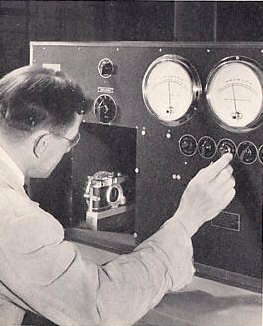| |
that would be
practical from the standpoints of weight, size, use,
and cost indicated a small negative size, as did the number of supplementary
features that were desirable as integral parts of the camera rather than
as accessories. Final choice rested on the 35mm film width and the 24
x 36mm format, because of the wide range of emulsions available for this
size, widespread standardization on the convenient 2 x 2-inch projection
slides it makes possible, similar standardization in projectors, and convenient
accommodation in precision enlarging equipment.
The number of these specialised
negative emulsions-in both black and white and color-as well as the different
types of pictures and different conditions under which successive groups
of pictures are made-indicated some practical and safe means of changing
quickly from one emulsion to another.
An achievement of cooperative
planning, design, and manufacture
Once
these determining factors were evaluated and interpreted into practicability,
experts went to work to put them into tangible form. Lens scientists,
camera, designers, mechanical engineers, authorities in range-finder and
view-winder optics, production engineers cognizant of the possibilities
of new precision manufacturing . . . these and many others started "from
scratch" to develop the
camera specified. Working in
|
|
| |
 |
closest cooperation
with one an-
other, they also coordinated their efforts with the activities of divisions
producing the films, accessories, enlargers used in contemporary advanced
photography. This coordination was a prerequisite because of the extreme
precision and wide scope determined upon . . . because of the intimate
interrelationship of the complex
mechanisms required . . . because of the interdependence necessary
|
|
